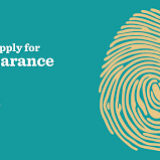Bridging the gaps in remittance transfer systems to the Philippines
Bridging the gaps in remittance transfer systems to the Philippines
It is a known fact that the Philippines is one of the largest team player in the world migration diaspora. In the past decade, remittances to the Philippines has increased quadruple making the country ranked as one of the top five remittance recipient countries in the world. Determinants of remittances primarily governed by micro and macro level, in which altruism, self-interest, and investment posit the major reason of continuous remittance growth. It is expected that remittances to the Philippines will continuously increase due to proliferation of technology such as mobile phones, internets and new innovative modes of sending money back home. However, like a broken bridge, there are formidable gaps in Filipino migrant workers’ remittances and their potential economic impacts.
Here’s why. A fair share amount of the remittance money is being exhausted by the transaction costs of sending money internationally. In a traditional way of sending money through agents, it estimated that about 8-10% of the remittance amount is being drained away for costs and fees. Large remittances company ultimately making this gap become wider than ever. Hence, World Bank has supported international effort to bring the remittances cost into half. Government, remittance-service providers and the rest of global community are encouraged to re-think policies and innovate processes that could bridge the gaps in migrants’ remittances.
In the Philippines, government authorities should play an active role in implementing policies and programs that could maximise Filipino migrants’ remittances.
- Improving communication and internet system
Philippines should establish and invest in improving its communication system especially the speed of internet in the country. This change would effectively eliminate delays in fund transfers both inbound and outbound the Philippines.
- Access to information
Trainings, programs and other awareness should be in-placed so that the families of migrants will be able to access information and will be able to know their options on how to collect remittances abroad and also how to properly allocate monies for various purposes. These will help poor migrant families to be financially included in the global community.
- Fostering innovation
Maximise the use of technology and compliance so to increase the fate of remittances in the Philippines and boost micro and macro-economic growth with intensified anti-terrorist and anti-money laundering rules.
As migrants, we can also do something to patch existing leakage in remittance systems in order to make every single dollar that we send to our loved ones worthy.
- Know your options
There are number of ways in sending money internationally. It varies from traditional via agents (Western Union or MoneyGram), bank transfers, PayPal, and online remittance-services. The first two are usually costly because of their established systems and proven effective services. PayPal does not really provide attractive fees or even competitive exchange rates. Hence, migrants with phone or internet access choose online remittance-services that provides high exchange rates and low fees with non-compromising services.
Several years ago, the number of online remittance-services has increased gradually due to remittance market growth and technological advancement. Some Filipino migrants, being constant consumers of this business, have launched online remittance centre that would cater and serve their fellow Filipino migrants’ remittances effectively. They belong to start-ups that aim to increase competition among global remittance-services and to widen financial inclusion around the world. RemitWisely, founded by mostly Filipino migrants in Australia, is one of the neophytes’ online remittance centre that offers best rates and low fees to our kababayan in the continent.
- Check the rates and fees
Always, always check the fees and exchange rates. As a migrant, you can make your remittances amount higher by checking out or comparing online remittances daily exchange rates (www.finder.com). Fees can be fixed or varied depending on the minimum amount of transfer. Avoid being scammed by checking the online remittances-service compliance and accreditation. In Australia, remittances centres have to registered and be regulated by the Australian Securities and Investments Commission (ASIC) and by the Australian Transaction Reports and Analysis Centre (AUSTRAC).
- Plan the fate of remittances
Work with your family to allocate the fate of your remittances. Fate of remittances could differ from countercyclical, procyclical or acyclical.
“Remittance flows are classified as countercyclical if they serve as insurance, family safety nets or compensatory transfers. Remittances are procyclical if they are driven by investment and profit motives, and acyclical if driven by implicit motives such as family aid and other social responsibilities.”
Procyclical remittance-driven is believed to help migrant families to create better future and responds positively to favourable macroeconomic indicators in the migrant’s home country.
Sources:
- http://ww.w.thedialogue.org/publicationfiles/orozco_unpd.pdf
- http://sihma.org.za/wp-content/uploads/2015/09/AHMR-Vol-1-No-2-May-August-2015-docx.pdf#page=4
- https://www.theguardian.com/global-development/shortcuts/2013/aug/07/sending-money-home-barclays-transfer
- https://www.finder.com/international-money-transfers/send-money-overseas
Visit Remitwisely.com.au













